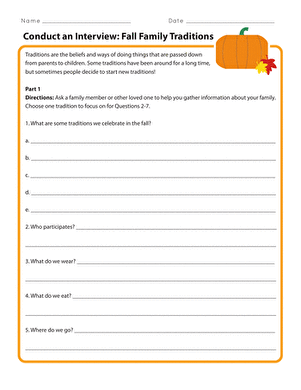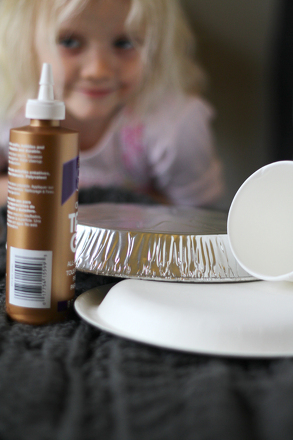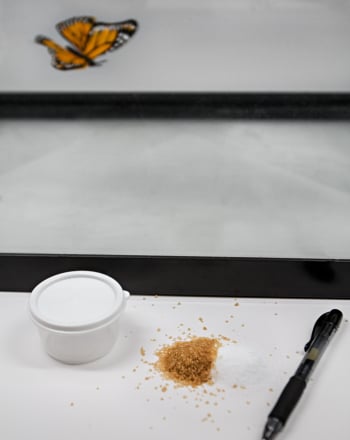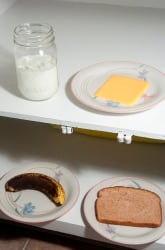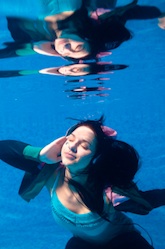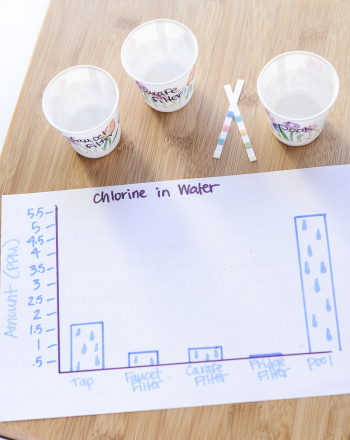Science project
Which Substance When Dissolved in Water will Conduct an Electrical Current?
Safety: Do not ingest the substances used in this project
Some substances when dissolved in water to produce a solution will conduct an electrical current. Such substances produce ions when dissolved in water, and it is the ions which carry the current through the solution. The research aspect of this science fair project is to use a conductivity device to determine if various substance dissolved in water can or cannot conduct electricity.
This science fair project focuses on the use a conductivity device that will enable the investigator to determine if a substance dissolved in water can or cannot conduct electricity and if it can, what type of conductor (electrolyte) it is.
From the observations made a data table will be generated and results displayed in the form of a graph.
Materials and Equipment / Ingredients
Conductivity device, plastic cups, large paper clips, masking tape, distilled water, mineral water, table sugar, carbonated soda, table salt, and household vinegar.
With the exception of the conductivity device all of the materials can be purchased from the local supermarket or major retail (Wal-Mart, Target, Dollar General, etc) discount department store. The Tri-fold display board can be purchased from an art & craft store.
A conductivity device can be purchased from the following online venders:
- Science in a Bag “Conductivity Circuit Board Indicator” retails for about $16.00 and includes free shipping.
- ScienceKit, Inc “Audio/Visual Conductivity Indicator” Catalog # WW45354M50 retails for about $42.00 and sometimes offers free shipping and handling.
Introduction
Electrical conductivity can be measured using a conductivity measuring device consisting of two metal electrodes usually spaced 1 cm apart (thus the unit of measurement is microSeimens or milliSeimens per centimeter). A constant voltage is applied across the electrodes resulting in an electrical current flowing through the solution to be tested. Since the current flowing through the solution is proportional to the concentration of dissolved ions in the water, the electrical conductivity can be measured. The higher the dissolved ion concentration, the more conductive the sample and hence the higher the conductivity reading.
A conductivity device is commonly used in hydroponics, aquaculture, swimming pools, and freshwater systems to monitor the amount of nutrients, salts or impurities in the water.
Digital photos can be taken during the experimenting process and the following websites offer down loadable images that can be used on the display board:
- http://fondriest.com/fileshare/subpages/science_library/conductivity.jpg
- http://usm.maine.edu/chy/manuals/114/images/ConDiag.gif
Research Questions
- What is an electrolyte?
- What is conductivity?
- Based on the results of your test which substance(s) are good electrolytes?
- Look at the list of ingredients listed on the mineral water bottle label. Which ones do you think contribute to the conductivity?
- Look at the list of ingredients listed on carbonated soda bottle label. Which ones do you think contribute to the conductivity?
- The liquid chemical paste found inside of commercial flashlight batteries are electrolytes, of the materials tested for conductivity which substances could possibly used in a battery?
Experimental Procedure

- Assemble the distilled water, mineral water, collected rain water, carbonated soda, and household vinegar.
- Prepare a sugar and salt solution by dissolving the two substances in distilled water.
- Fill plastic cups half full of each of liquids to be tested.
- Straightened two paper clips and using tape fasten the clips to opposite sides of the first cup to be tested.
- Do not place the alligator clips directly into the solution to be tested. This will result in the eventual corrosion of the clips. Instead, clamp the alligator clips to the paper clips then place them in the solution as shown to the left.
- Depending of the conductivity device being used record whether or not the LED glows (if the Conductivity Circuit Board Indicator®), and whether the glow is bright, moderately bright or dim in the table. Rinse, the paper clips and cup with distilled water between tests.
- If a small running stream is nearby test a sample of its water for conductivity. If the water does display conductivity what substances might be dissolved in the stream and where might they have come from?
Place a
|
|
LED Light Intensity & Conductivity Classification |
||||
|
Name of Liquid
|
Bright
|
Moderately Bright
|
Dim
|
No Light
|
Electrolyte Type
|
|
Distilled water
|
|
|
|
|
|
|
Tap water
|
|
|
|
|
|
|
Mineral water
|
|
|
|
|
|
|
Rain water
|
|
|
|
|
|
|
Table salt solution
|
|
|
|
|
|
|
Table sugar solution
|
|
|
|
|
|
|
Carbonated soda
|
|
|
|
|
|
|
Household vinegar
|
|
|
|
|
|
- Conductivity: Detecting Ions in Solution
- Conducting Solutions
- Measuring Conductivity
- Electrical Conductivity of Solutions-You Tube Video Clip
NOTE: The Internet is dynamic; websites cited are subject to change without warning or notice!
Education.com provides the Science Fair Project Ideas for informational purposes only. Education.com does not make any guarantee or representation regarding the Science Fair Project Ideas and is not responsible or liable for any loss or damage, directly or indirectly, caused by your use of such information. By accessing the Science Fair Project Ideas, you waive and renounce any claims against Education.com that arise thereof. In addition, your access to Education.com's website and Science Fair Project Ideas is covered by Education.com's Privacy Policy and site Terms of Use, which include limitations on Education.com's liability.
Warning is hereby given that not all Project Ideas are appropriate for all individuals or in all circumstances. Implementation of any Science Project Idea should be undertaken only in appropriate settings and with appropriate parental or other supervision. Reading and following the safety precautions of all materials used in a project is the sole responsibility of each individual. For further information, consult your state's handbook of Science Safety.




